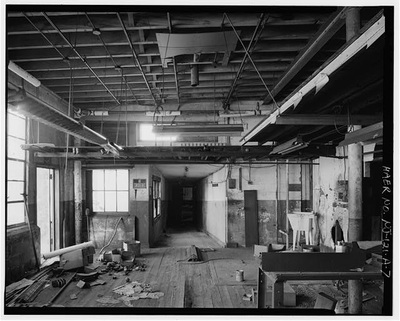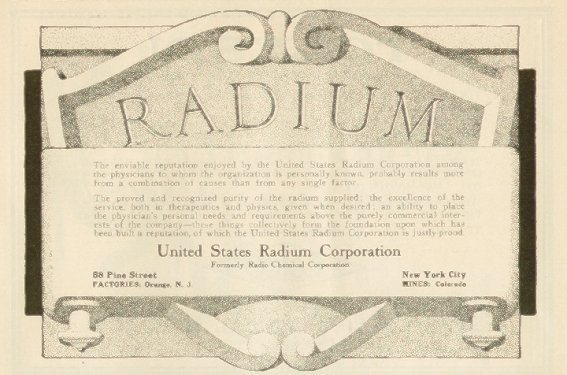

It is about three times as abundant as uranium.īut the most baffling part about this story is not the fact that the general public had no idea that radium was so dangerous, but the fact that some people most certainly did! And yet, they sat back and watched as everyone around them was poisoning themselves. The line included lip-sticks, face cream, soap, powder, and toothpaste containing thorium and radium. Thorium is predicted to be able to replace uranium in nuclear reactors and can be used as a source of nuclear power. Alfred Curie (who was no relation to Marie Curie, but his name sold French women on the idea of radioactive make-up), subsequently setting the trend over in America too. In Paris, a cosmetic range called Tho-Radia became all the rage, developed by Dr. (The advertisement fails to mention a common side effect of your urine glowing in the dark).Įven products that didn’t actually contain the medical “cure-all” ingredient tried to fraudulently market their products to imply they were somehow radio-active. At the dawn of the 20th century, radium was America’s favourite new miracle ingredient, and radium-based household commercial products had become the norm, from cold remedies and toothpaste to wool for babies, children’s toys and even drinking water. It was a time in history when the dangers of radiation were not well understood by the general public. von Sochocky, died himself in 1928 from his exposure to the radioactive material. It’s still unknown how many died from exposure to radiation but it’s clear how many could have been saved. and Canada alone to paint watch faces after the initial success in developing a glow-in-the-dark radioactive paint. At the dawn of the 1920s, an estimated total of 4,000 workers were hired by corporations in the U.S. Radium Corporation hired around 70 women from Essex County, NJ, and by 1927, more than 50 of those women had died as a direct result of radium paint poisoning that was eating their bones from the inside, to put it simply. In their downtime, some even messed about painting their nails, teeth and faces with the luminous paint, marketed under the brand name “UnDark”.īetween 19, the U.S. They were paid the modern equivalent of $0.27 per watch dial, so the harder they worked, unknowingly swallowing deadly amounts of poison each time to make a few extra pennies, the faster death would approach.

The women were told that the glow-in-the-dark radioactive paint was harmless, and so they painted 250 dials a day, licking their brushes every few strokes with their lips and tongue to give them a fine point. They were small-town girls from New Jersey who had been hired by a local factory to paint the clock faces of luminous watches, the latest new army gadget used by American soldiers. Schaub succumbed to radium poisoning in 1933 at the age of 31.The Radium Girls were so contaminated that if you stood over their graves today with a Geiger counter, the radiation levels would still cause the needles to jump more than 80 years later. The universal horror caused by this case contributed to a 1941 bill that made all industrial diseases compensable and extended the time during which workers could discover the illness. This measure occurred too late, according to a two-year statute of limitations, to actually benefit the women who had suffered from radium poisoning. The League campaigned successfully to have radium necrosis recognized as an occupational disease by the State Workmen’s Compensation Board in 1926. Findings demonstrated that the radium Schaub had ingested at work was plated in her bones, causing necroses, joint deterioration, anemia, and cancers from which she and other painters suffered. An investigation made by the Consumers League of New Jersey looked into Schaub’s illness. Although she had two teeth removed to ease the pain, Schaub was plagued by “gloomy” thoughts and bouts of nervousness.

In the fall of 1923, Schaub began to have trouble with her teeth. After the war, doctors discovered that these women were dying of anemia and a disease called radium necrosis (radium poisoning)which ate away their jawbones. These women were directed to point up the brushes with their tongues which led to the consequent ingestion of radioactive paint. Radium Corporation in Orange painted luminous numbers on watch faces. Her death alerted authorities to the dangers of radio-activity.ĭuring World War I, young women employed at the U. Radium Corporation plant in Orange was an early victim of radium poisoning. Katherine Schaub (1902-1933), a watch dial painter at the U.S.


 0 kommentar(er)
0 kommentar(er)
